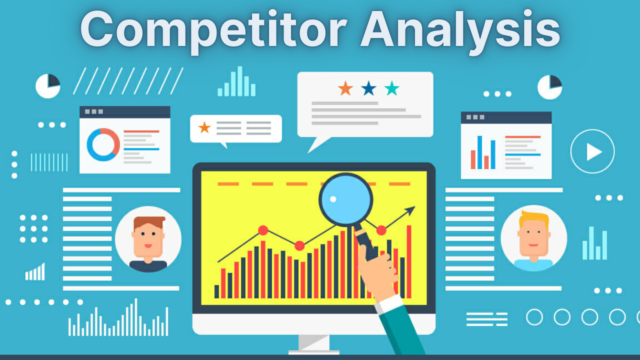In today’s dynamic business environment, understanding your competition is crucial for success. Competitive analysis provides valuable insights into market trends, customer preferences, and the strategies of rival companies. Digital marketing plays a vital role in facilitating this analysis, offering tools and techniques to gather and interpret data effectively. In this blog, we’ll explore how digital marketing contributes to competitive analysis and how businesses can leverage these insights for strategic advantage.

Understanding Competitive Analysis
Competitive analysis involves evaluating your competitors to understand their strengths, weaknesses, opportunities, and threats (SWOT). This process helps businesses identify gaps in the market, uncover potential threats, and develop strategies to outperform competitors. Digital marketing offers various channels and tools that can enhance the competitive analysis process.
The Role of Digital Marketing in Competitive Analysis
- Online Presence Assessment
- Website Analysis: Analyzing competitors’ websites provides insights into their branding, product offerings, and customer experience. Tools like SimilarWeb or SEMrush allow you to assess website traffic, engagement metrics, and user behavior.
- Social Media Monitoring: Social media platforms are valuable for gauging competitor engagement and audience sentiment. By monitoring competitors’ social media accounts, businesses can assess their content strategies, customer interactions, and overall brand perception.
- SEO and Keyword Research
- Keyword Analysis: Understanding the keywords competitors target can inform your own SEO strategy. Tools like Ahrefs or Moz help identify which keywords drive traffic to competitors’ websites and how effectively they rank for those terms.
- Content Strategy Insights: By analyzing competitors’ content, businesses can identify popular topics and formats that resonate with the audience. This knowledge can guide your content creation efforts to fill gaps in your own strategy.
- Paid Advertising Analysis
- Ad Campaign Monitoring: Digital marketing allows for the tracking of competitors’ advertising strategies. Tools like AdEspresso and SpyFu enable businesses to analyze competitors’ ad spend, ad formats, and messaging. This information can help refine your own advertising approach.
- A/B Testing Insights: Observing competitors’ ad variations can provide ideas for A/B testing your own campaigns. Understanding what resonates with the audience can lead to more effective messaging and targeting.
- Customer Reviews and Feedback
- Review Analysis: Examining customer reviews and feedback for competitors reveals strengths and weaknesses in their offerings. Tools like Yelp or Google Reviews can help identify common customer pain points and areas where your business can excel.
- Sentiment Analysis: Digital marketing tools can perform sentiment analysis on reviews and social media comments, providing a quantitative measure of how customers perceive competitors. This data can inform your messaging and positioning strategies.
- Market Trends and Industry Insights
- Social Listening Tools: Using tools like Hootsuite or Brandwatch, businesses can track industry trends and discussions in real time. Monitoring these conversations can uncover emerging topics and consumer preferences that inform competitive positioning.
- Benchmarking: Digital marketing enables businesses to benchmark their performance against competitors. By analyzing metrics like engagement rates, conversion rates, and customer acquisition costs, businesses can identify areas for improvement.
Leveraging Insights for Strategic Advantage
- Positioning and Differentiation: Use competitive insights to refine your unique selling proposition (USP). Highlight what sets your products or services apart from competitors, ensuring your messaging resonates with target audiences.
- Content Strategy Development: Inform your content marketing efforts based on competitors’ successful topics and formats. Creating high-quality, engaging content that addresses customer pain points can help attract and retain customers.
- Adaptation and Innovation: Use competitive analysis to identify trends that competitors may be capitalizing on. Staying agile and willing to adapt your strategies can position your business as an industry leader.
- Customer Experience Enhancement: Learn from competitors’ strengths and weaknesses in customer service. Implementing best practices can improve customer satisfaction and loyalty.
Conclusion
In a competitive marketplace, leveraging digital marketing for competitive analysis is essential for making informed business decisions. By understanding competitors’ strategies, strengths, and weaknesses, businesses can position themselves for success.


No responses yet